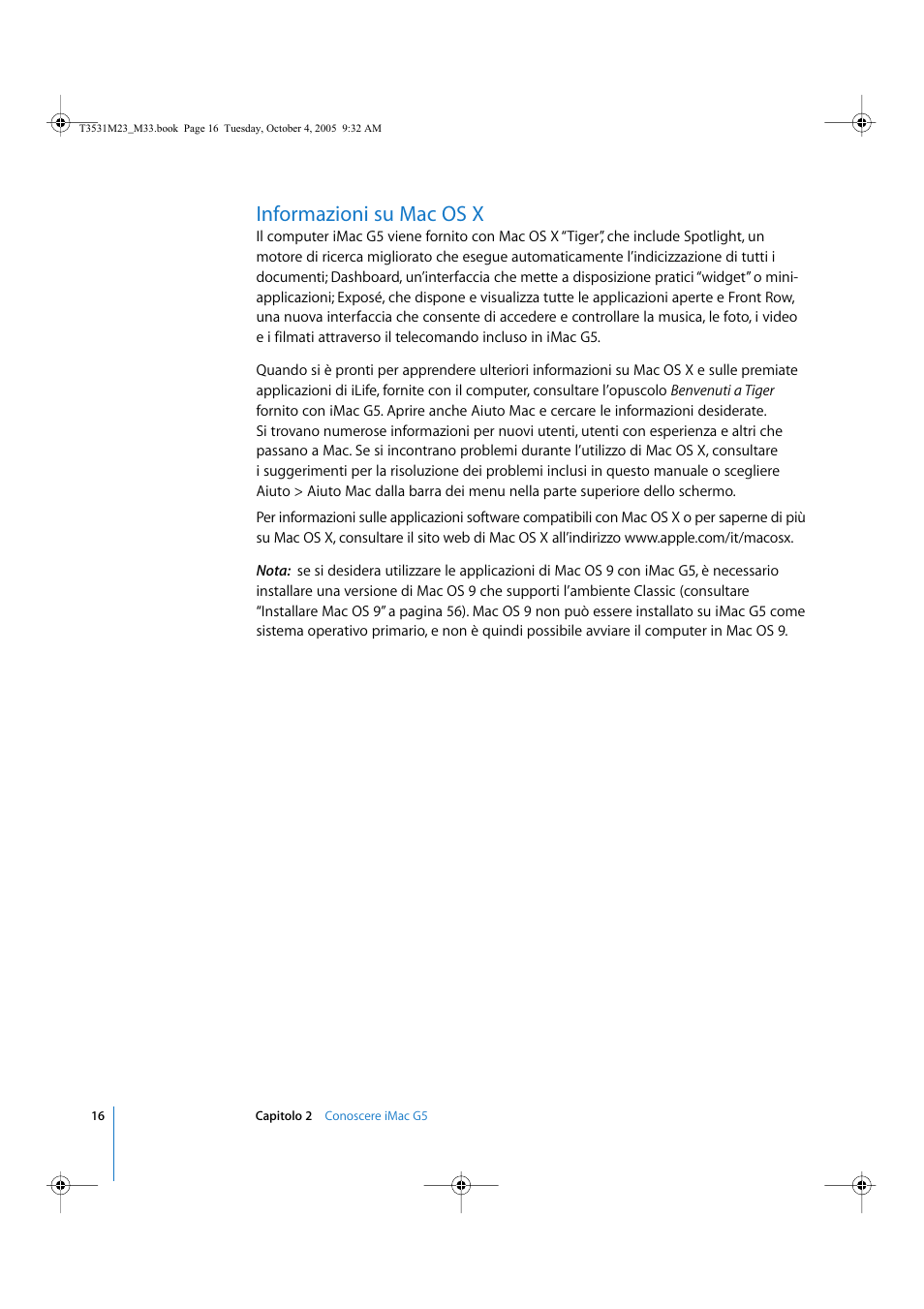
#G5 MAC OS MAC OS X#
#G5 MAC OS UPDATE#
The newest version is Power Mac G5 Uniprocessor Firmware Update 5.1.5f2, which is only for 1.6 GHz G5 Power Macs. You should have the most recent firmware installed in your Power Mac G5. Note that the 1.6 GHz model is one of Apple’s entry-level G5s, which means it uses 33 MHz PCI expansion slots instead of 133 MHz PCI-X slots, has 4 memory slots instead of 8, and uses a 450W power supply (dual processor models have 600W). This model provides 90% of the raw horsepower of the 2.0 GHz model at 87% the price, making it slightly a better value for those who don’t need that last 10% of speed. The 1.8 GHz single CPU model was discontinued and replaced by a Late 2003 dual processor model selling for $100 more on 2003.11.18. The case is a bit taller and slightly narrower than the Power Mac G4 and just a little deeper. Apple claims the Power Mac G5 is “twice as quiet” as the Power Mac G4. The case includes four thermal zones and nine fans to handle cooling, each independently controlled for speed. The G5 is in a new aluminum enclosure that’s vented in the front and back. One headphone jack, one USB 2.0 port, and one FireWire 400 port are located on the front of the G5 for easy access, something Power Mac users have been dreaming of for years. The Power Mac G5 also adopts the new twice-as-fast AGP 8x bus for video cards.
#G5 MAC OS SERIAL#
New to Apple are Serial ATA (SATA), which supports up to 1.5 GBps bandwidth for internal hard drives, and built-in USB 2.0, which finally gives Mac users full speed access to some of those wonderful USB 2.0 peripherals developed over the previous couple years.

System memory is so fast (400 MHz RAM on an 800 MHz to 1.0 GHz bus) that there’s no need for a level 3 cache. The motherboard architecture uses the new HyperTransport technology. The PPC 970 uses the same Velocity Engine instructions as the AltiVec engine in Motorola’s G4 processor, and it’s fully compatible with existing 32-bit software.

The PPC 970 is based on the same POWER CPU core as IBM’s supercomputers.īoth the Power Mac G5 and the PowerPC 970 CPU were designed from the ground up to support symmetric multiprocessing (using two or more CPUs to run processes in parallel). In terms of increased clock speed, that means Intel had a 6.7% speed bump the same day that Apple announced a 40% improvement in clock speed (from 1.42 GHz to 2.0 GHz), allowing it to call the Power Mac G5 the world’s fastest personal computer at the time.Īpple is using the 64-bit PowerPC 970 processor from IBM, since Motorola abandoned its G5 development plans long ago. The Power Mac G5 was introduced on 2003.06.23 – the same day Intel officially unveiled the 3.2 GHz Pentium 4.


 0 kommentar(er)
0 kommentar(er)
